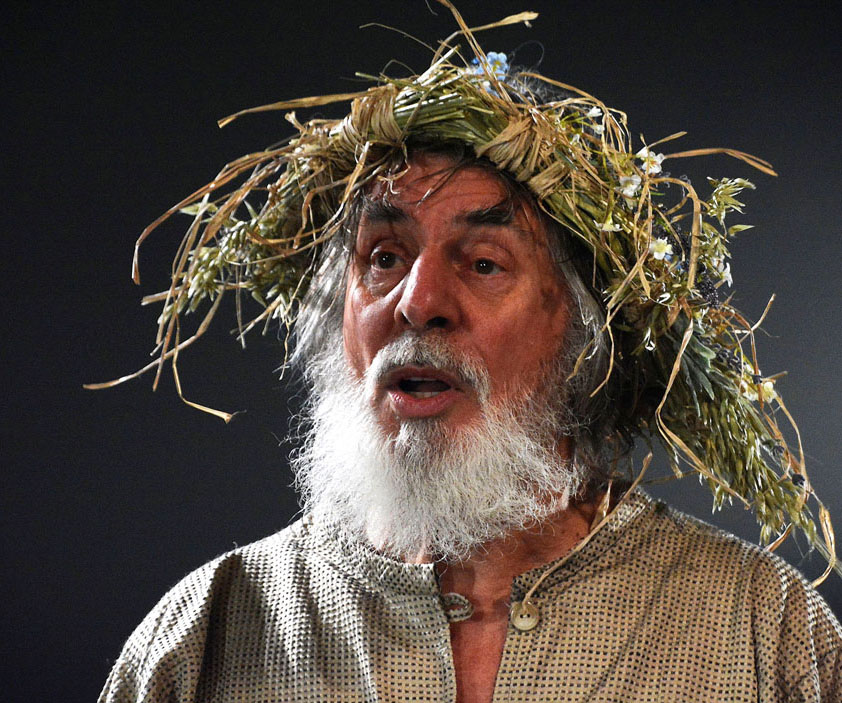Shakespeare’s King Lear is a play that could be described as one that is more sinned against than sinning. In the fifteen months that StageTalk Magazine has been operating this is the third production it has reviewed. During that same period, there have been several others, of varying quality, around the country. We have seen a modern-dress 1960s gangster one, a black Lear one, plus a play about playing King Lear, not to mention the ill-fated Brian Blessed attempt. Jonathan Miller’s current production for Northern Broadsides takes pride in being what it describes as “traditional”.
King Lear is arguably Shakespeare’s most moral play, dealing with themes of domestic frictions, sibling rivalry, loyalty and greed with which we are all very familiar – at least we are down our way. In spite of being part of what appears a close-knit group and having our kith and kin around us, ultimately we are all alone. As Hamlet, Shakespeare’s other great troubled hero, beset with family problems says, they can be more than kin but less than kind.
Presented on a small rostrum stage set in the vast darkness of the main stage with only the odd table and chair and a simple wooden frame above it – representing, I imagine, its own proscenium arch – the production was certainly simple and uncluttered. The opening scenes were quite static, formal even, and had a rather Rembrandty look to them and because of this they failed, to a certain extent, to build the menace, tension and foreboding one would expect.
Northern Broadsides makes a point of using northern accents rather than RP so, in spite of Lear himself being decked out in all his regal finery, there was a very enclosed, domestic feel to the proceedings. Barrie Rutter was befittingly majestic as the king complete with the traditional flowing robes, long white hair and Father Christmas beard. Traditional it may be, but it is also in danger of becoming a bit of a cliché.
For me, this production only really caught fire in the second half when the swirling mist and deafening thunder really conjured up the desolate heath. Fine Time Fontayne [sic] made a fine Fool but with his semi-clownish make-up and frock-coat costume was not really traditional. Kent was nicely played by Andrew Vincent as a lumbering giant and the pair of them, along with the already mad king, gave the proceedings a Waiting for Godot feel, which I liked. I think it was also in the second half that Mr Rutter really excelled. As we all know Lear is a rite of passage for an older actor, as Hamlet is for a young one. As Rutter quotes in the programme, “You should play Lear twice, once when you can, once when you should.” That’s the dilemma – too young and you are not convincing, too old and you can’t manage it. Mr Rutter, despite opting-out of making the traditional final entrance “bearing Cordelia, dead in his arms”, made a decent enough fist of it but, despite his excellent performance in the second half, lacked a certain edge. It was a bit too much by the book for my liking.
There were some good, enjoyable performances from the fifteen-strong cast, but they tended to be the less traditional interpretations. Fine Time Fontayne, I have already mentioned, was a suitably shrewd and sensible Fool and John Branwell made a likeable, rather bumbling Gloucester. Sean Cernow was scary, in an almost hissy, pantomime sort of way, as the lean, Brylcreemed Edmund and Jos Vantyler came close to upstaging everyone with his camp, Little Lord Fauntleroy, Oswald. Of the ladies, Nicola Sanderson was believable as the ambitious and scheming Regan.
The minimalist setting worked well in some respects, concentrating everything on a relatively small playing area, although it did tend to limit any real fluidity to the piece. With some excellent lighting by Guy Hoare and some clever costumes and effects this was a satisfying production. A good Lear, but not a great one. ★★★★☆ Michael Hasted 25/03/15
Photos by Nobby Clark


